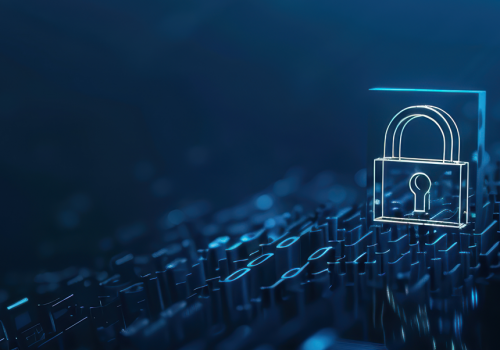With the current fast-paced digitized playground, cybersecurity is definitely an issue that cannot be swept under the carpet for organizations in the world. The cyber threats’ emergence in different forms, such as ransomware and phishing systems, is a huge threat to an organization’s confidential data, indicators of operations continuity, and the standing of the organization in the market.
In tandem with the aforementioned ubiquity of cyber-attacks, there is a pressing need for the consolidation of a robust culture for cybersecurity that will build capacities for organizations to hold their own defense and have the desired resilience against the incessant cyber threat attacks.
Though there are numerous types of cyber-attacks that can harm organizations, ransomware attacks are unique in their malevolence topped by high levels of technical sophistication. The harmful campaigns, which are usually kicked off through trick neurons, diagnose the incredibly valuable data and surrender to requests for large ransoms for the decryption keys. Although many ransomware attacks appear to be successful and cause major trouble for the victim, they also have disastrous consequences, both financially and operationally, including data loss and substantial financial losses.
Particularly, the long-term impact that a bad reputation can have in such cases is evident, making an organization lose public credibility and trust in its ability to secure the personal data of people.
Security in the digital sphere is among the top issues companies are currently facing as they cope with the intricate digital systems and abundant data exchange occurring nowadays. The cyber risks that are inflicted on organizations’ data security by including ransomware attacks and phishing schemes into the mix present a great danger to organizations’ sensitive information, operational continuity, and reputation.
In this regard, the development of a robust cybersecurity culture is a necessity for organizations that either aim to be three times more secure than their competitors or to be able to transition effectively from one defensive structure to the next in the face of continuous cyber threats.

Understanding the Importance of Cybersecurity Culture
Cybersecurity firms should highlight the need for cybersecurity culture development in the current Internet environment, where they need to cope with various cyber threats, which are changing all the time. In contrast to the previous security measures, which involve reactive approaches and barriers, an information security culture implies a high level of proactive risk management aimed at protecting comprehensive security. It represents a fusion of the old security principles with the new “all-encompassing” concept, which includes technological safeguards and other considerations, as might be the case, human behavior, organizational policies, and strategic alignment.
The center of the cybersecurity culture really is that security is not just a set of tools and protocols but a way of thinking, which turned out to be an inseparable part of the company’s DNA. It embraces the formation of a uniform value system that ensures people-mindedness, responsibility, and continuous improvement at all levels. One of the principle concerns of this entailment is to build an ambiance in which security is not perceived as a ‘gap-filler’ that limits productivity or as an irrelevant aspect of it but as a mandatory part of business operations, which is vital for safeguarding the company’s assets and maintaining trust with all stakeholders.Cybersecurity culture merges traditional security principles with a modern “complete” and ahead approach to risks. Fundamentally, awareness of security culture is based on the establishment of a consistent value system that promotes care, responsibility, and continuous improvement in every organizational level.
The main factor of raising a cybersecurity culture is to reflect that cybersecurity not only is the subject of the IT department, it is, however, a universal obligation that everyone in the organization shares. Through such initiative of creating an environment wherein security is an intrinsic part of organizational culture, organizations can gradually influence the security mindset of their personnel, and thereby, generate a sense of responsibility for cybersecurity practices, and thus, contribute to the overall robustness and adaptability necessary to evolve along with the new and emerging threats.
Key Strategies for Promoting Cybersecurity Awareness
1. Leadership Commitment
Leadership commitment will set the right direction for the cybersecurity culture within an organization. Executives and senior management must show their resolute support in cybersecurity projects through allocating financial resources, sponsoring education programs, and pushing for security to be embraced as a core organizational value. For example, when the leadership makes cybersecurity a strategic imperative, it sets forth a precedence for the whole organization indicating the crucial role that security plays. It also helps to establish a culture of accountability and responsibility.
2. Employee Training and Education
Complete training and education programs ensure that the workers are familiar with the cybersecurity landscape and can address it effectively, comprehensive training and education programs are crucial for helping the employees know what to do and how to handle different cybersecurity scenarios. Beyond the basic employee awareness training program, companies should provide institution-specific courses, role and responsibility oriented, on threat identification, incident response protocols, as well as secure coding practices among others. Through the provision of continuous learning, employees get the tools to actively protect the company’s digital information, and this mechanism will also ensure the overall security stance of the organization.
3. Promoting a Security-First Mindset
Creating a security-focused approach to company matters, engages in building a culture in which high priority will be given to security concerns at all organizational levels.
Staff members on their part ought to be motivated to engage in a security first approach, considering the identification and elimination of risks as part of their routine job functions. Such integration could involve applying a concept of security by design, putting security checkpoints into the planning and workflow stream, and having channels for open communication to raise security issues or concerns.
By instilling security as a primary organizational value, organizations get individuals who are well versed in this concept promoting a culture of second nature security conditions that further lower the probability of successful cyber-attacks.
4. Regular Security Assessments and Audits
Continual security assessments of cybersecurity and IT controls must be carried out regularly to ensure the detection of potential breaches and the evaluation of existing security defenses as well.
Security audits, like penetration testing and vulnerability scans, have the purpose of finding weak spots and the parts that are worth improving. These assessments aside, they also keep the businesses up to standard with regulatory needs and industry norms, which is a vital factor when it comes to the evolution of threats and the necessity of corresponding measures.
5. Implementing Robust Policies and Procedures
The most essential thing to do is to develop guidelines and procedures that will ensure consistency and build accountability in cybersecurity management. Policies covering data handling, access control, incident response, and security governance need to be developed by organizations. These policies should direct and remind staff at all levels of the organization accordingly. Moreover, organizations must routinely assess and alter these policies as the technology and regulations develop and new threats emerge so that the security measures stay fresh, relevant, and effective.
6. Building Partnerships and Collaboration
Cybersecurity is a rather complex team effort that invites many actors from outside of your organization. Creating partnerships with industry counterparts, government organizations, and cybersecurity experts should assist in filling the information gap, facilitate threat intelligence sharing, and improve collective defenses against common adversaries. By taking part in industry panel discussions, exchanging best security practices, and cooperating on joint ventures, organizations can benefit from the joint knowledge and resources that help improve their cybersecurity defenses and build resilience against ever-evolving cyber risks.

7. Technology Automation and Integration
Organizations may also focus on human-centric strategies in cybersecurity by integrating technology and automation, which can further improve their cybersecurity posture. Automation tools will perform routine security tasks, such as patch management, log analysis, and incident response.
As a result, they will consequently respond in a timelier and organized way to the threats encountered. Besides the use of technologies, such as artificial intelligence (AI) and machine learning (ML) to enable the detection of and protection against emerging threats, organizations will have to see to it that their employees pay attention in a timely manner when the threats arise and respond appropriately.
8. Continuous Monitoring and Threat Intelligence
Knowledge and intelligence are just as important as guarding in combating those cyber risks. Organizations can effectively use complex monitoring platforms and threat intelligence feeds, which allow initiating any event or attack that is suspicious, questionable, or gradually extends in their network system to the network system being monitored. Such real-time visibility is capable of organizing fast reactions toward any possible cybercrime, thereby, reducing the extent of its damage and obstructing the chances of data loss or rendering a system unserviceable.
9. Employee Recognition Programs
Employee empowerment and goal recognition processes can be persuasive enough to stimulate preventive cybersecurity behaviors in an organization and create an environment of security consciousness where staff feel more engaged in the cybersecurity culture. Companies that identify ways of recognizing and compensating employees who embody model cybersecurity practices are showcasing the importance and value the organization puts on security matters. It also makes it clear to the staff that it is essential to be careful with sensitive information and critical assets and that we all need to pull together to achieve the set goals. Moreover, when employees are encouraged and free to report incidents, as well as weak spots, without having to fear sanctions, they develop an environment of transparency and accountability, which in turn is conducive to the ability of organizations to identify and address these issues as soon as possible. Building cybersecurity units is of paramount value in case the company wants to exist successfully in the era of digitalization.
The best way in designing stage practices of the cybersecurity culture is to ensure that all operators, workers, and decision-makers are sensitized to cybersecurity, consequently, making security their top priority in all operations. The development of cybersecurity culture in organizations can be achieved through the top management, training, and education of employees, bringing a security-first-mindset, implementing regular assessment and audits, enforcing rules and regulations, integrating technology and automation, regular monitoring, threat intelligence receiving, employees engaging, and employee involvement through a rewards system. Entities shall involve themselves by approaching cybersecurity threats as a strategic issue. They can also respond to cyber threats with cyber-attack prevention and recovery methods. These high skills can be obtained from learning, therefore, they can cope with the quickly changing and digitally interconnected world. Synergic efforts and collaborative responsibilities assigned will eventually culminate into a cybersecurity culture that represents the foundation on which the development of resilience, innovation, and wider business enterprises takes place while cyber threats remain imminent.









